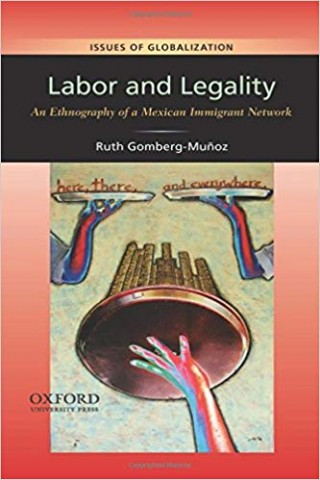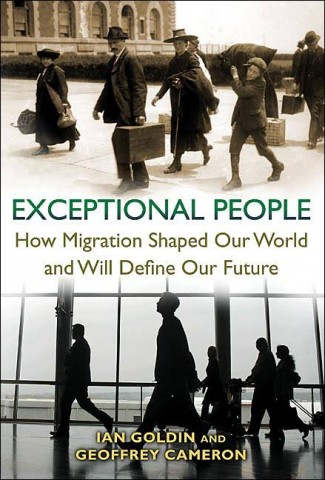Ruth Gomberg-Munoz first book, Labor and Legality (2011), explores the lives of undocumented Mexicans living in Chicago. This book, Becoming Legal: Immigration Law and Mixed-Status Families (2017), explores the experiences of seeking legal status. The chapters follow the process, rooted in ethnographic research. The book is accessible. I used this book in a first-year undergraduate course and the content was well suited, particularly alongside some more theoretical readings. Recommended reading for those seeking an introduction to the use of ethnography and legal anthropology.
I spent much of the summer looking for good ethnographies that would be suitable for first year undergraduate students - essentially a book that is not written for anthropologists, not heavy with theory, while still presenting the value that ethnography can offer. Gomberg-Munoz's Labor and Legality (2011) fit that well. The book also provides insight into a contemporary issues, which we encounter in our social media feeds and on the daily news, making it a book that can be quite engaging. If you are looking for an accessible ethnography on the topic of migration to the US (specifically, undocumented migration from Mexico), this is book well worth picking up. It is also quite useful as a book for teaching. Many of the ethnographies I read were more appropriate for graduate students and experts. Labor and Legality works well for a broader audience.
There are reports of hundreds of thousands of Ethiopian women working in the Middle East, and stories of dangerous travel across the continent of those trying to reach South Africa. However, little is known about the actual trends, policies, and pushes/pulls. A 2015 publication by the Ethiopian Forum for Social Studies addressed this topic in "Ethiopian Labour Migration to the Gulf and South Africa" by Asnake Kefale and Zerihun Mohammed. The publication is more akin to an extended essay than it is a book (101 pages), but is essential reading for those interested in the subject of legal or illegal migration from Ethiopia, within a space where limited amount of data are available.
Asnake and Zerihun attempt to "produce evidence-based knowledge on the social and economic impacts of labour migration by looking at the challenges and opportunities of Ethiopian labour migration to the Gulf and South Africa. On the one hand, international migration from Ethiopia could be considered an aspect of [a] development problem. The major push factors that force Ethiopian migrants to the Gulf and South Africa are economic/development problems ranging from lack of employment opportunities to wage differentials. On the other hand, international migration could be considered an an important resource that could be tapped for accelerating socio-economic development" (p. 7). Throughout, the authors attempt to present both of these stories - unlike reporting from advocates who present migration as a negative story, and also unlike those who advocate for greater migration as a means of expanding opportunities without considering the costs.
One of the key contributions of the book is the exploration of the gendered nature of migration, aligned with the work opportunities as well as the risks. Young Ethiopian women are moving in large number to the Middle East to be employed as domestic workers while the vast majority heading to South Africa, almost entirely illegally, are young men. The available data was also quite illuminating - one might assume the UAE is a key destination, but in fact after Saudi Arabia the largest destination for Ethiopian migrants (largely women), was Kuwait (p. 19-20).
The authors suggest that "international migration cannot be stopped. Even if receiving countries and sending countries put barriers, people will find different ways to pass the barrier and cross the borders" (p. 83-84). As a result, the authors provide pragmatic approaches in their recommendations: comprehensive labour migration policy, worker training, improved governance, improved data collection, coordination with receiving countries, enhancing legal migration options while preventing illegal forms. However, rather than supporting migrants, it it believed that the government needs to take a much more engaged and active from - from recruitment to return. One of their interviewees explained: "What the prospective migrant workers wanted was not only the government to provide them with training, but also to certify their abilities and help them in job placement and the in the receiving countries. When the trainees were told that the TVET colleges will only provide training, but not be involved in job placement, the majority of the trainees left the program" (p. 87).
Open doors or build walls? Immigration is one of the most politicized issues. Thus, the value of the book by Goldin, Cameron and Balarajan (2011): "Exceptional People – How Migration Shaped Our World and Will Define Our Future". Before delving into the detail, this book was likely written for an undergraduate audience – those moderately well read on migration will find the first two sections ("Past" and "Present") a summary of the literature. The third section ("Future") offers some interesting food for thought that draws from the literature. It is also worth emphasizing that this book was published in the year the Syrian Civil War started, before the large movements of people into Europe and well before Trump began promising walls and bans.
In the introductory remarks, the authors make clear their position: "International migration pays dividends top sending countries, receiving countries and migrants themselves. In receiving countries, it promotes innovation, boosts economic growth, and enriches social diversity, and is a boon for public finance. Sending countries have their economies stimulated by the financial and social feedback of migrant networks. Migrants reap the welfare benefits of higher wages, better education, and improved health when they move to relatively more developed countries. High rates of migration do, however, produce costs that are carried unevenly by particular localities and countries. These costs are often short-run, and they can be reduced through resource transfers and by building the capacity of public institutions to manage the social and administrative changes presented by higher rates of migration" (p. 5-6). Later chapters (e.g. 6: Impacts of Migration), confront assumptions and assertions with evidence, which has a tendency to emphasize the positive and downplay the negative, but nonetheless makes a strong and clear case for the important, and positive, role that migration has played, and will continue to play, globally.
The first part of the book ("Past") provides an overview of migration in human history. One notable point in reflecting upon history is the novelty of citizenship and immigration restrictions in the modern sense: "Throughout the development agrarian civilizations and the emergence of the first states and empires, borders were porous, and cross-cultural encounters were intermittent but far from uncommon. Cross-cultural interaction was a primary stimulus for the growth of commerce, the spread of ideas and religion, and the advancement of civilizations" (p. 28). Yet, the value of ideas moving with people began to have less of an impact because "somewhere around 1000 CE, world history began to shift from a pattern of divergence – or separate development of civilizations – toward a pattern of global convergence. Up until this time, migration had virtually always meant a permanent departure from the home community. Around the turn of the millennium, however, the accelerating tempo of cross-civilization commerce was launching transoceanic journeys and satellite communities that were the first tremors of globalization" (p. 32). Thus, a shift occurred from migration being an important way for ideas to move, toward migration as an important way for labor and innovative people to move.
It was not until recent centuries that the world of regulations, quotas and applications took shape: "The twentieth century would witness rising nationalism accompanied by a system of states increasingly capable of monitoring their borders. As migrant destination countries received people from ever more diverse locations – and often with fewer skills – native residents demanded greater management of migration flows by the state. Opposition to migration was commonly xenophobic or racist, and prejudices toward foreigners were inflamed by economic downturns and unemployment. The defense of perceived national interests through rising economic protectionism in the early twentieth century was extended to migration control" (p. 67-68). An interesting contribution this book offers, at least in my perspective, is how many nations (e.g. West Germany) used temporary worker programs, and much might be learned from these for the expansion of such programs in countries like Canada today.
Migration is "a key driver of human and economic development and that our future will be strongly influenced by policies regarding migration. How governments craft and coordinate migration policy will determine whether our collective future is defined by a more open and cosmopolitan global society or one that is unequal, partitioned, and less prosperous" (p. 2). What do the authors see for the future (from the vantage point of 2011): "all the evidence tells us that the first half of the twenty-first century will be characterized by more migration… By the middle of the twenty-first century, our societies will be more diverse than ever before" (p. 213). Yet, some caution of what this increase entails: "The dramatic forecasts of as many as 200 million "environmental refugees" by 2050 have been widely cited in official reports, but they have not held up to wider scrutiny. We believe it is unlikely that climate change alone will lead to a tenfold increase in the number of refugees and displaced persons, and doubling of the total number of migrations, as implied by these guesstimates" (p. 237). The authors note that the "'pressure points' include intercountry inequality and wage disparities, growing working-age populations in many developing countries, and environmental stress. More people will have the capacity and propensity to move because of economic growth in poor countries, urbanization, and rising education standards" (p. 241). Additionally, "developed countries are already witnessing a contracting in the supply of native low-skilled labor, a trend that will continue into the future… Without increased migration, these labor shortages will generate a long-term drag on the economies of developed countries" (p. 250).
What then to do – what policies and approaches do the authors recommend – on the question of open doors or walls? They conclude: "We propose five key principles that should guide engagement with migrants and migration by governments and international organizations: extend transnational rights; promote social and economic advancement for migrants; widen the umbrella of legal migration; combat xenophobia and migrant abuse; and improve data collection" (p. 272). Each of the principles is outlined in detail within the book.
Latest peer reviewed articles, book chapters, reports, and working papers...
Read Logan's latest book reviews and research updates...



